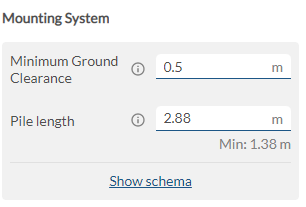Want to simulate with bifacials? You came to the right place! Let's hop into RatedPower and learn more about this!
Introduction
The bifacial technology has become a trend in the photovoltaic industry, which is why RatedPower made it possible for users to simulate with bifacial modules and trackers. Following, we will explain the inputs and parameters that you will need to introduce to successfully simulate with bifacial modules.
Albedo Value
The Albedo value directly affects the calculation of the energy yield for bifacial modules; hence, RatedPower proposes three different ways by which you can determine your Albedo data from the Energy tab.
- The first option is choosing a yearly fixed Albedo value based on the type of terrain (snow, bare soil, grass, dry grass, sand... ).
- The second option is choosing the data given by the NASA Satellite called MODIS which is in a monthly resolution.
- The third option is choosing the data given by NASA Power.
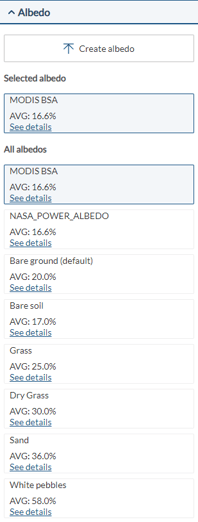
- The last option is the possibility to create your own Albedo values by clicking on the "+Upload albedo" button. This option will allow you to either set a fixed value throughout the year or define an Albedo value for each month.
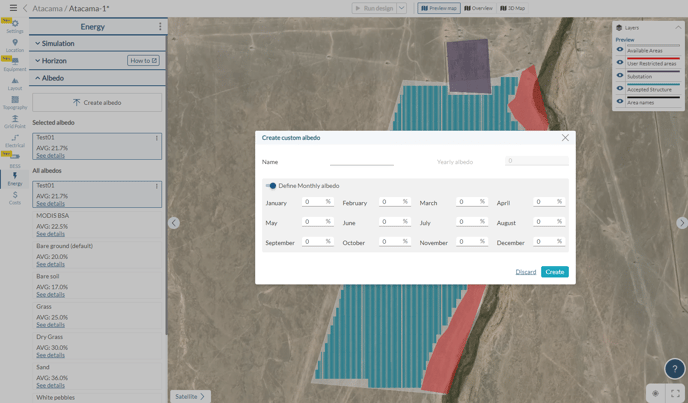
Bifacial Modules
In RatedPower, you will find a large database of modules, and among them bifacial modules. In the Equipment tab, you can use the search box to search the preferred bifacial module by typing "Bifacial".
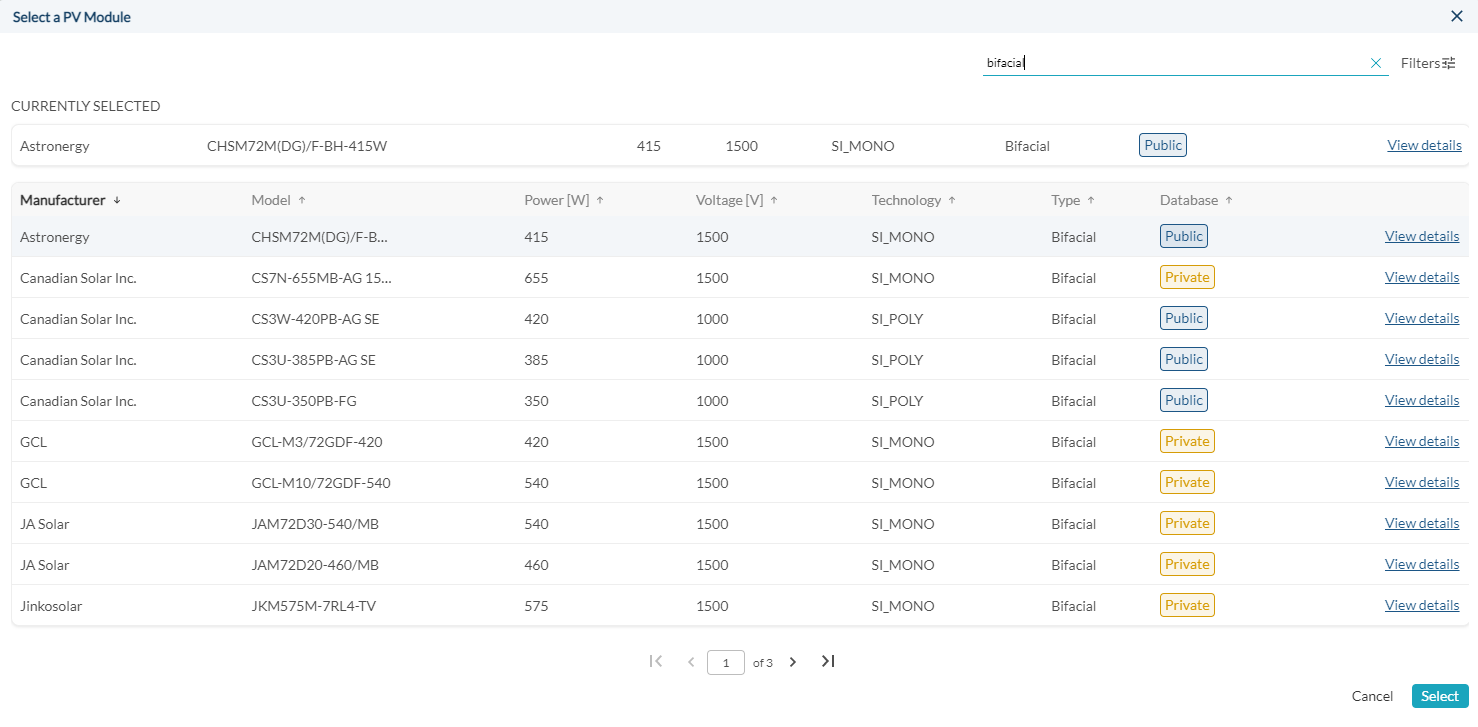
In addition, you can upload your own bifacial module in the "Equipment" page in the sidebar on the left of the window. For more information regarding uploading your own equipment, please refer to the article How to upload your own Equipment.
Bifacial Trackers
Moreover, during your design process, you will find in the list of structures under Equipment tab, trackers that are designed for bifacial modules are available. You can easily find them using the search box on top of the list by typing "Bifacial".
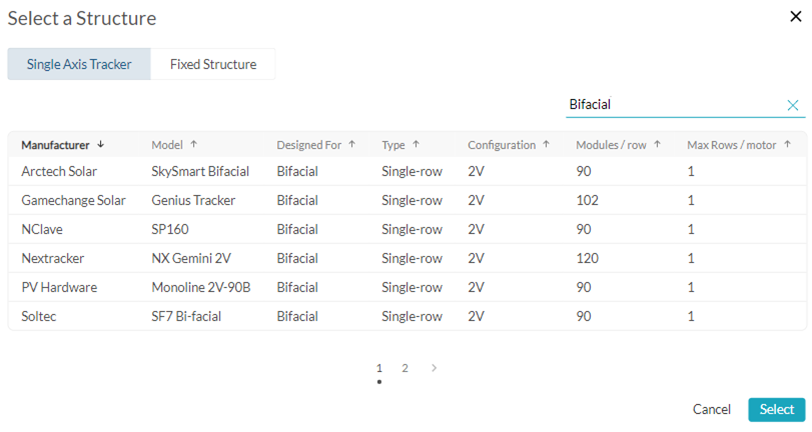
Ground Clearance
The minimum ground clearance is an important input in the calculation of the energy yield for bifacial modules. This distance can be introduced in RatedPower in the "Equipment" tab under the list of structures as illustrated in the following picture.
According to research, the minimum ground clearance must be higher than 1m to get a higher bifacial gain.
Energy losses
In the Energy tab, you will define losses that specifically affect bifacial energy production. In PV Module Losses, you will find the Soiling Losses for the back-face and the Bifacial mismatch.

In addition, at the bottom of the page, there is a section called Advanced Configuration, where you will find more inputs related to the bifacial energy simulation, such as the Constant heat transfer coefficient, the Wind heat transfer coefficient, the Table transparency, and the IAM Loss Model.
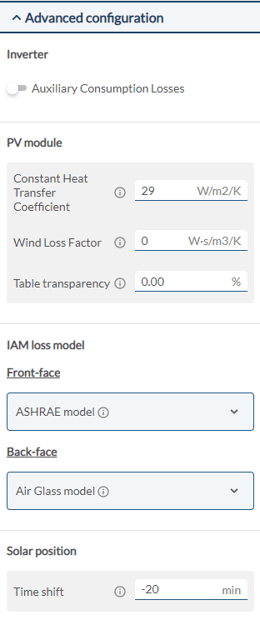
For the IAM loss model, RatedPower proposes four different models for both the front-face and the back-face: Manufacturer IAM Loss Profile, ASHRAE Model, Air-Glass Model, and Air-Glass Model (AR coating).
We highly recommend choosing the Manufacturer IAM Loss profile as it proved to give better energy results.
Summary
To conclude, RatedPower allows you to simulate with bifacial modules using various important parameters that can help achieve a good bifacial gain. These inputs are mainly, the Albedo value, the bifacial modules and trackers, the minimum ground clearance, and the energy losses. However, other parameters such as structure shading factor are calculated automatically by the software. The mentioned parameters along with RatedPower's calculation model will allow you to obtain satisfying energy results.
For any other questions or more information regarding this topic, you can contact us at: support@ratedpower.com

